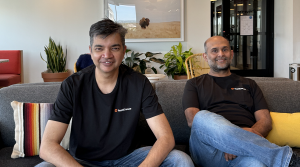Urban agriculture meets the Internet of Things
![]() Getting fresh produce in the city may be one of the little perks you enjoy every now and then, but living the locavore lifestyle can get expensive. Boosted by connecte devices, urban farms are getting smarter. About 58 percent of the world’s population resides in urban areas, prompting a rise in urban agriculture. And in today’s mobile and connected world, even keeping tabs on your city plants can be as easy as checking its status via an app.
Getting fresh produce in the city may be one of the little perks you enjoy every now and then, but living the locavore lifestyle can get expensive. Boosted by connecte devices, urban farms are getting smarter. About 58 percent of the world’s population resides in urban areas, prompting a rise in urban agriculture. And in today’s mobile and connected world, even keeping tabs on your city plants can be as easy as checking its status via an app.
This week’s SmartHome roundup features emerging solutions addressing urban agriculture such as the successful crowdfunding project Plant Link, HarvestGeek, and GrowCube.
Plant Link
The Plant Link system is made up of a sensor called the Link, and the base station, which does all the analysis and connects to your home router. The router then connects the whole system to the cloud. The Link has two prongs that are driven into the soil, monitoring your lawn, garden or plant box. It alerts you when plants need watering, and can be programmed with your sprinklers to water thirsty plants.
HarvestGeek
HarvestGeek is similar to Plant Link in the sense that it uses sensors, a hub, internet connection and the cloud to deliver real-time updates about your plants. Boosting the automation services, HarvestBots do all the work. Included in this bot kit is the SensorStation and SensorStation+ that measure air temperature, humidity, light intensity and has a removable probe for measuring soil moisture as well as a CO₂ levels.
The BaseStations serve as the system’s gateway to the internet, allowing for wireless communication between remote systems before everything gets uploaded to HarvestGeek’s database. The HydroStation is designed for hydroponic growers, and the AutomationStation controls up to four devices independently, helping you take care of your plants through temperature regulation, light control and more.
![]()
GrowCube
Growing small plants in the city is great, but urban settings limit a farm’s ability to scale to crop level. Besides the physical constraints, large cities tend to have increased air and water pollution, making crops potentially hazardous for your health.
If you really want to grow your own crops in the city, one future initiative could look something like the GrowCube, the concept for an internet connected greenhouse. It’s airtight, so pollutants can’t get in, and you use filtered water to bathe the plants in a mist of water droplets. The system is connected via mobile and web apps, allowing the user to monitor and control the micro-climate inside the cube in real time.
GrowCube is currently not available in the general market, and it may take years before consumers can bring one home. But the creative solutions being shared with the world will tackle the many obstacles holding this market back.
A message from John Furrier, co-founder of SiliconANGLE:
Your vote of support is important to us and it helps us keep the content FREE.
One click below supports our mission to provide free, deep, and relevant content.
Join our community on YouTube
Join the community that includes more than 15,000 #CubeAlumni experts, including Amazon.com CEO Andy Jassy, Dell Technologies founder and CEO Michael Dell, Intel CEO Pat Gelsinger, and many more luminaries and experts.
THANK YOU









